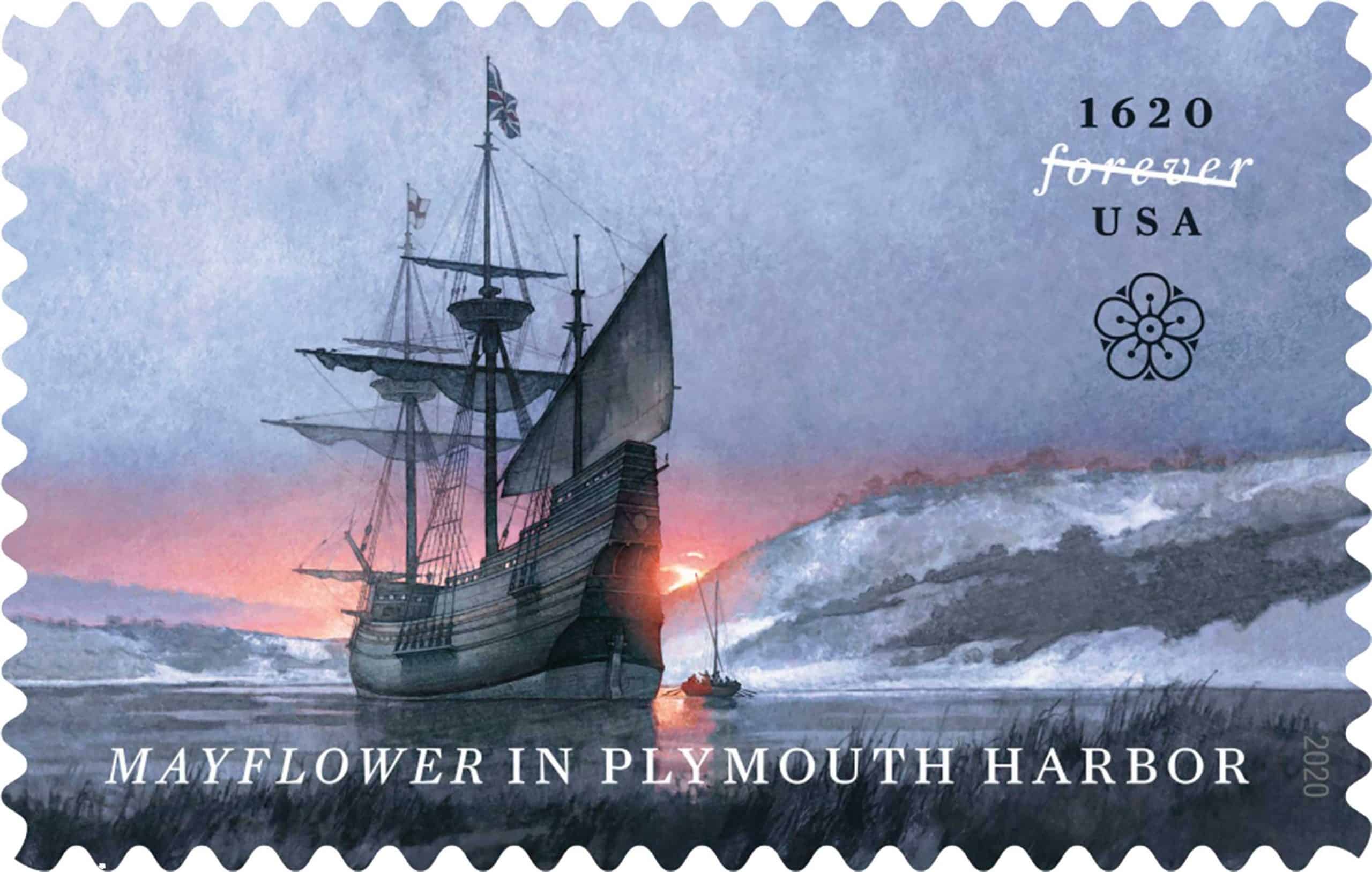
By Matt Tormey
On December 16, 1620, the tall ship Mayflower anchored in what is now known as Plymouth Harbor, having carried 102 passengers across the Atlantic Ocean from Plymouth, England.
To commemorate the 400th anniversary of this pivotal event in American history, the United States Postal Service recently issued a special 55-cent Forever stamp. The release of the stamp also coincided with the return of Mayflower II, the restored reproduction of the historic vessel (recently added to the National Register of Historic Places), to Plymouth Harbor earlier this fall.
Mayflower’s landing in Plymouth marked the first successful settlement of European colonists in the New England region. Unlike earlier settlers such as those of Jamestown, the passengers of the Mayflower came to America not seeking wealth but rather religious freedom. These pilgrims are equally known for the creation of the Mayflower Compact, America’s first piece of democratic legislation. Nationally, perhaps the pilgrims are best remembered for befriending the local Wampanoag tribe. With substantial help from the native Wampanoag people, the Plymouth colony was able to survive a harsh winter. In 1621, the pilgrims celebrated a feast with Wampanoag, which went on to be known as the first Thanksgiving.
Original artwork on the stamp, officially titled “Mayflower in Plymouth Harbor,” was created by acclaimed illustrator Greg Harlin. Best known for his contributions to a number of children’s books on early American history. Harlin used a combination of watercolor, gouache and acrylics, with some digital refining, to depict the ship at the end of its harrowing journey.
Should you use it for its intended purpose, the stamp will ‘forever’ be of equal value to the cost of mailing a First-Class 1-ounce piece of postage. Philatelists or stamp collectors may know that the Mayflower also appeared on a one-cent stamp in 1920 for the ship’s tercentenary.
Mayflower stamps can be ordered at any post office location or online at
usps.com/shop.
